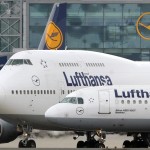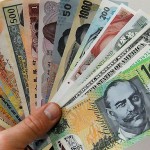Yesterday’s trade saw EUR/NOK within the range of 8.9759-9.1761. The pair closed at 8.9853, losing 1.63% on a daily basis, which marked the second consecutive daily loss.
At 7:37 GMT today EUR/NOK was up 0.20% for the day to trade at 9.0038. The pair touched a daily high at 9.0220 at 7:33 GMT.
Fundamentals
Euro zone
Spanish consumer inflation – final estimate
Spain’s final annualized consumer inflation probably decelerated to -1.1% in December, according to the median forecast by experts, while confirming the preliminary rate, reported on December 30th. If so, this would be the sixth consecutive month, during which annual consumer inflation stood in negative territory. It would also be the lowest inflation rate since July 2009, when a rate of -1.37% was registered. In November the final annualized Consumer Price Index (CPI) fell 0.4%, confirming the preliminary estimate.
According to provisional estimates, the drop in consumer prices in December was mainly due to lower costs of diesel and petrol.
Key categories, included in Spans CPI, are food and non-alcoholic beverages (accounting for 20% of the total weight) and transport (15%). Other categories are real estate (12%), hotels, coffee and restaurants (11.5%), clothing and footwear (9%) and entertainment and culture (7.5%). Health, communication, education and other goods and services comprise the remaining 25% of the index.
The CPI measures the change in price levels of the abovementioned basket of goods and services from consumer’s perspective and also provides clues over purchasing trends. In case the annual CPI plunged more than projected, this would have a bearish effect on the euro. The National Statistics Institute (INE) will release its official report at 8:00 GMT.
Spanish final annualized CPI, evaluated in accordance with Eurostat’s harmonized methodology, probably matched the preliminary CPI performance of a 1.1% drop in December, which was reported on December 30th. If so, this would be the fifth consecutive month, when the harmonized inflation stood in negative territory. In November the final HICP was reported to have fallen 0.5%, in line with the preliminary estimate.
Euro zone Balance of trade
The surplus on Euro areas seasonally adjusted trade balance probably expanded to EUR 21.3 billion in November, according to the median forecast by experts, following a surplus figure of EUR 19.4 billion in October.
The regions trade surplus, without a seasonal adjustment, was reported to have reached EUR 24.0 billion in October, or the highest figure on record, following a surplus of EUR 16.5 billion in October a year earlier. Total exports rose at an annualized rate of 4% to EUR 179 billion in October, while total imports remained almost unchanged at EUR 155.6 billion.
The surplus on regions extra-EU28 trade balance amounted to EUR 7.6 billion in October 2014 compared to a surplus of EUR 4.1 billion in October 2013. The highest increases in EU28 exports were registered with China (an 11% gain within the period January-September 2014 compared with January-September 2013), South Korea (10%) and the United States (6%). As for EU28 imports, the highest increases were observed with South Korea (10%), China and Turkey (both 7%).
Euro zones balance of trade produces regular surpluses mainly due to the high export of manufactured goods, such as machinery and vehicles. At the same time, the region is a net importer of energy and raw materials. Member states such as Germany, Italy, France and Netherlands play a key role in total trade.
The trade balance, as an indicator, measures the difference in value between region’s exported and imported goods and services during the reported period. It reflects the net export of goods and services, or one of the components to form the Gross Domestic Product. Generally, exports reflect economic growth, while imports indicate domestic demand. In case the trade balance surplus expanded more than anticipated in November, this would certainly have a bullish impact on the euro. Eurostat is to publish the official trade data at 10:00 GMT.
Norway
Balance of trade
At 9:00 GMT Statistics Norway is to report on the nations trade balance regarding December. In November Norway had a surplus at the amount of NOK 24.64 billion, down from NOK 31.60 billion in October. The latter has been the largest figure since February, when the trade surplus amounted to NOK 33.77 billion. The nations balance of trade produced the highest surplus on record at the amount of NOK 48.270 billion in January 2014.
International trade accounts for almost 37% of Norway’s Gross Domestic Product. The countrys main exports include seafood, crude oil, light metals, ship equipment and maritime services, while it imports mostly machinery and equipment, chemicals, metals, and foodstuffs.
In case of expanding trade surplus in December, the local krone would receive a boost.
Pivot Points
According to Binary Tribune’s daily analysis, the central pivot point for the pair is at 9.0458. In case EUR/NOK manages to breach the first resistance level at 9.1156, it will probably continue up to test 9.2460. In case the second key resistance is broken, the pair will probably attempt to advance to 9.3158.
If EUR/NOK manages to breach the first key support at 8.9154, it will probably continue to slide and test 8.8456. With this second key support broken, the movement to the downside will probably continue to 8.7152.
The mid-Pivot levels for today are as follows: M1 – 8.7804, M2 – 8.8805, M3 – 8.9806, M4 – 9.0807, M5 – 9.1808, M6 – 9.2809.
In weekly terms, the central pivot point is at 9.1131. The three key resistance levels are as follows: R1 – 9.2655, R2 – 9.4591, R3 – 9.6115. The three key support levels are: S1 – 8.9195, S2 – 8.7671, S3 – 8.5735.





